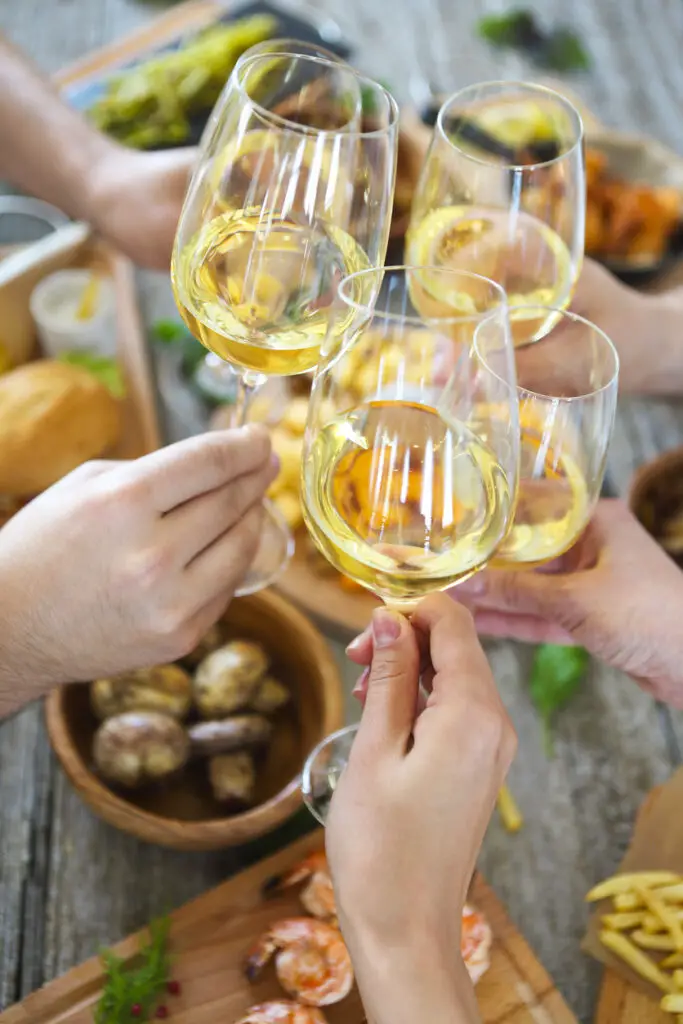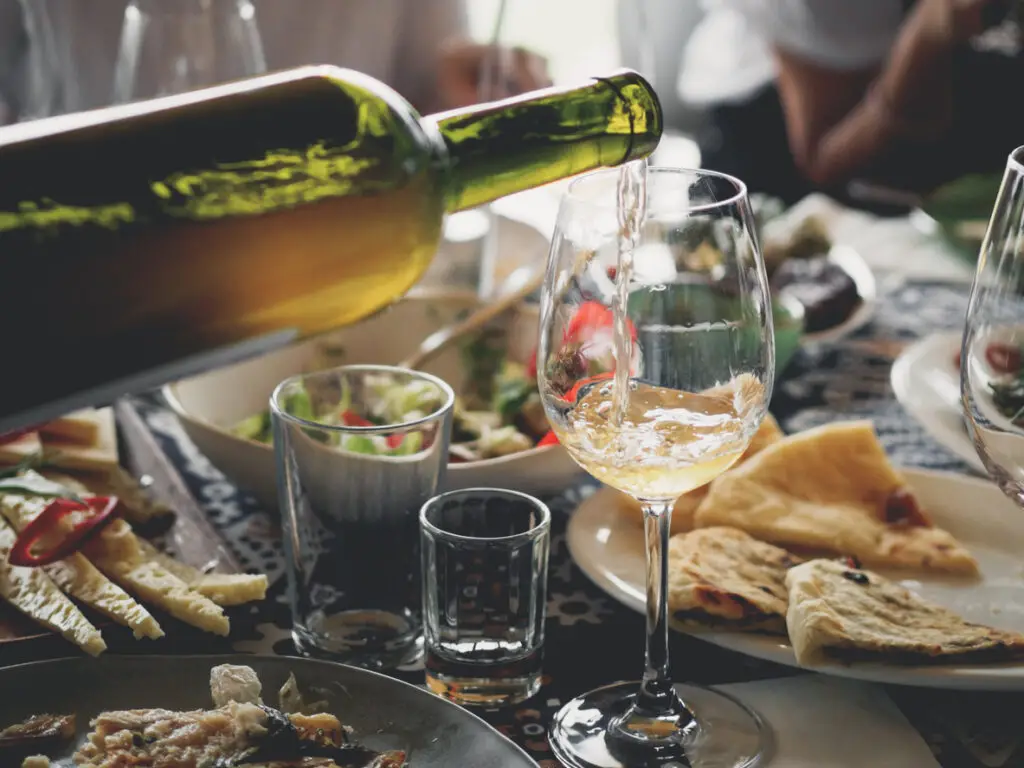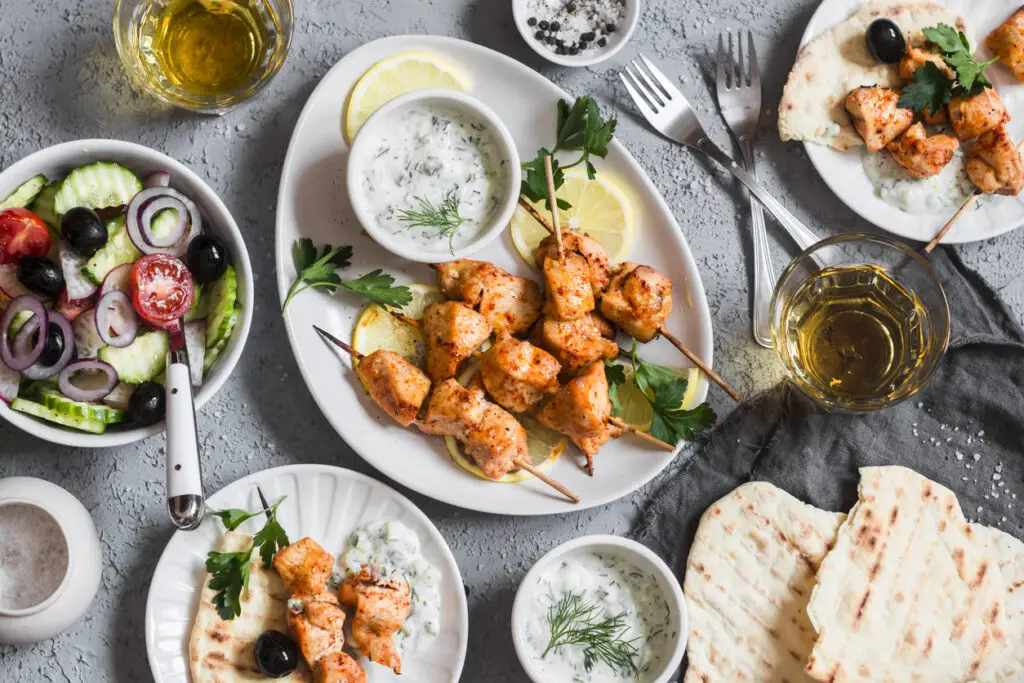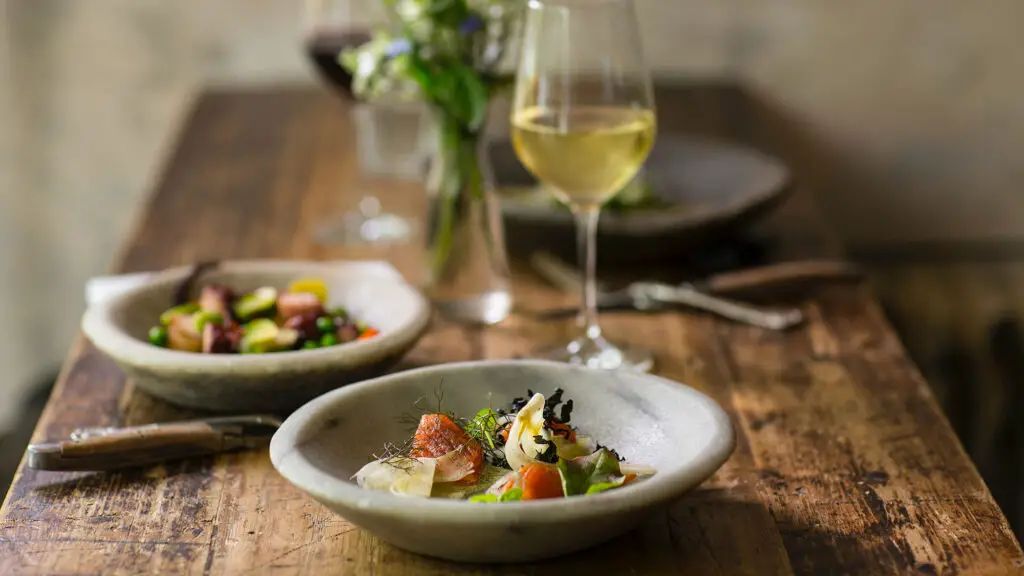Pairing food and wine isn’t as easy as many think. This is an art of its own; you must take all the flavor nuances into account and consider how well the textures, aromas, and ingredients go together. If you are a lover of delicious whites, then you may be wondering, what is the best white Bordeaux food pairing?
Because of its freshness and flavor profile, white Bordeaux pairs well with almost any white food, including all types of fish, shellfish, clams, oysters, mussels, sushi, pork, veal, and chicken.
Let’s take a closer look at this wine and why these foods pair well with it!
Why You Should Be Drinking White Bordeaux
Now we know that white Bordeaux isn’t a popular wine, and frankly, this should be a crime. Before we get into food pairings, here are a few reasons why you should be drinking white Bordeaux.
Luxury on a Budget
People go after luxury wines from Chateau Petrus, Château Lafite, and Château Latour all the time, meanwhile the equally amazing white Bordeauxs of the region have been flying under the radar. Since this region makes money from the red wines, they sell their whites for much less.
This means you will get a quality luxury product for much less of a price. Excellent white Bordeauxs can be found for less than $25 and even $15, so you can’t beat that!
Bordeaux As A Major Birthplace
Do you consider yourself a fan of Sauvignon Blanc? Well, this was actually born in Bordeaux and is a main ingredient of the White Bordeaux blend. So, many affordable White Bordeauxs are light and fruity with flavors of citrus and aromas of flowers and grass. These pair especially well with shellfish.
The Inventors of Blends

Author Note: Wine blends are great since they are usually more complex than a single style of wine. And the winemakers from Bordeaux take blends very seriously. If you ever happen to meet a Bordeaux winemaker, ask them the percentage of each grape in their wine, and they will surely tell you to the decimal point.
White Bordeaux is made by mixing Sauvignon Blanc with Sémillon and Muscadelle, and this combination brings unique characteristics to the wine.
Exclusive White Wines
Since White Bordeaux is not as well known as the reds from this area, it cannot demand the amount of scratch the reds can. This means not many Bordeaux wineries are using their land for farming these grapes. So, if a winery devotes their space to make this wine, they are surely proud to have their name on the bottle. If it’s on the store shelf, you know it’s the real deal.
White Bordeaux Wine Flavors
White Bordeaux usually comes in one of two major styles, either light/fruity or rich/creamy. The light and fruity styles make up most of white Bordeaux production and are very affordable. Rich and creamy white Bordeaux wines are produced in the Pessac-Leognan region and are usually more pricey. So what do these two styles of White Bordeaux taste like?
Light & Fruity
This white Bordeaux style can be found in any store where wine is sold. It has strong flavors and aromas of citrus such as lemon, grapefruit, and lime, along with some hints of gooseberry, passionfruit, honey, honeysuckle flower, grass, and sometimes freshly-wet concrete.
Rich & Creamy
This white Bordeaux is less readily-available but highly sought-after. They are made mostly of Semillon, offering a deeper and oilier feeling on the tongue compared to Sauvignon Blanc. With one sip, you will taste notes of baked apples and pears along with caramelized grapefruit, crème brûlée, figs, ginger lemon butter, orange zest, and even chamomile.
White Bordeaux Food Pairing
White Bordeaux wines are very versatile and can work gracefully with a variety of different food combinations. As a general rule of thumb, these wines will pair well with any white fish and buttery dishes.
Generally, seafood is a great match, as long as you don’t use any highly acidic seasoning such as vinegar and lemon to avoid overshadowing the flavors of your wine. If you don’t like meat, Arugula Salad with Parmesan is another great option for you.
General Tips For Pairing Wine & Food
Now you may be thinking, what about other wines? Knowing how to pair food and wine is a nice skill that will come in handy a lot, so why not learn it now? To help you get started, here is a small collection of tried-and-true methodologies from wine connoisseurs to make consistently good pairings.
That said, once you start to get familiar with the different wines and flavors, you will become confident and can experiment with breaking the rules sometimes.
Here are nine tips to help you get started:
- The wine must be more acidic than the food.
- The wine must be sweeter than the food.
- The wine must have the same level of flavor intensity as the food.
- Red wines match best with bold meats (like red meat).
- White wines match best with light meats (like fish or chicken).
- Bitter wines are best balanced with fat.
- Try to match the wine with the sauce instead of the meat.
- Whites, Sparkling, and Rosés usually make great contrasting pairings.
- Red wines usually make for congruent pairings.
Congruent vs. Contrasting Pairings

These pairings are the basis of wine and food. A contrasting pairing forms balance by contrasting the tastes and flavors of the food and wine. A congruent pairing forms balance by amplifying the common flavors.
Identifying The Basics
Top Tip: Surprisingly, there are over 20 different tastes that can be found in food. These include the basic sweet, sour, and fat, along with the extremes like spicy and umami. Luckily you will only need to focus on six main tastes when it comes to pairings. These are sweet, bitter, salt, acid, fat, and spice (Piquant).
Basic Tastes in Wine
Wine usually doesn’t have the three tastes of fat, spice, and salt but does have acid, sweet and bitter in different degrees. Wine can usually be grouped into three different categories:
- Red wines are more bitter.
- White, rosé, and sparkling wines are more acidic.
- Sweet wines are sweeter.
Basic Tastes in Food
When discussing food, simply think of the basic dominant tastes in a dish. For example, pasta has two primary components, and these are fat and salt. Meat barbecue is slightly more complex and has fat, salt, sweet, and spice. Even meatless dishes can be simplified. As an example, a green salad has acidity and bitterness.
Think of Intensity
Is your dish super light or super complex? A salad may seem light at first, but a dressing like balsamic vinaigrette has lots of acidities. If the dish intensity isn’t clear at first, try to focus on the power of each taste factor (acidity, salt, sweet, etc.). When thinking of wine, consider if it is light or bold. Here are some examples:
- White Bordeaux is usually light-bodied but complex.
- Sauvignon Blanc is light but has high acidity.
- Chardonnay has a rich body but isn’t too acidic
- Pinot Noir is light-bodied and has a low tannin concentration.
- Cabernet Sauvignon has a full body and is very bitter.
Look For Contrasting or Congruent Pairings
Now that you know all the basic taste components of your dish, you can start experimenting with your pairing options. A baked pasta dish will provide several possible pairings:
Complementary Pairing: Pairing macaroni with an acidic white wine will complement the fat in the dish. So, for example, traditional mac and cheese with creamy sauce will be perfect for a white wine like Pinot Grigio or Sauvignon Blanc to create a Complementary Pairing.
Congruent Pairing: Match a creamy white wine to complement the creaminess in the dish. For example, traditional mac and cheese with a creamy white wine like Chardonnay will form a Congruent Pairing.
Get Creative

Once you form a balance between the major taste components in both your wine and your dish, you can start to get creative by matching the more subtle flavors. Here are some examples for you:
Bold Reds: The ideology behind pairing pasta and cheese with a bold red is that the tannins will be more balanced with the salt and fat from the dish. This balancing is going to leave you with the other subtle flavors to match with in the wine and cheese.
Author Note: So, for example, if your dish has smoked gouda in it, you could choose a Shiraz that also has a smoky finish. The smoky flavors blend to make the perfect Congruent Pairing while the wine tannins form a Complementary Pairing with the fat of the dish.
Sweet Whites: The ideology behind pairing pasta and cheese with a glass of sweet white wine is to bring out all the sweet and salty flavors. A mac and cheese dish with ham would be a great match for a zesty white wine with slight sweetness such as Riesling.
The acidity would form a Complementary Pairing with the fat, and the sweetness will be a Congruent Pairing with the ham.
Our Last Toast
As you can see, white Bordeaux is a very versatile wine that goes well with many foods. It really is such an underrated wine and deserves much more attention than it gets. So next time you are picking up a bottle for your dinner party, reach for the white Bordeaux.
We are sure you will be getting praises for picking the perfect wine! We hope you enjoyed this article on White Bordeaux food pairing.
To living a full-bodied life,
Wesley

